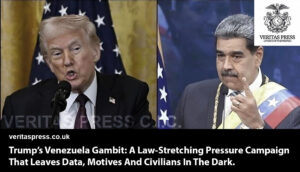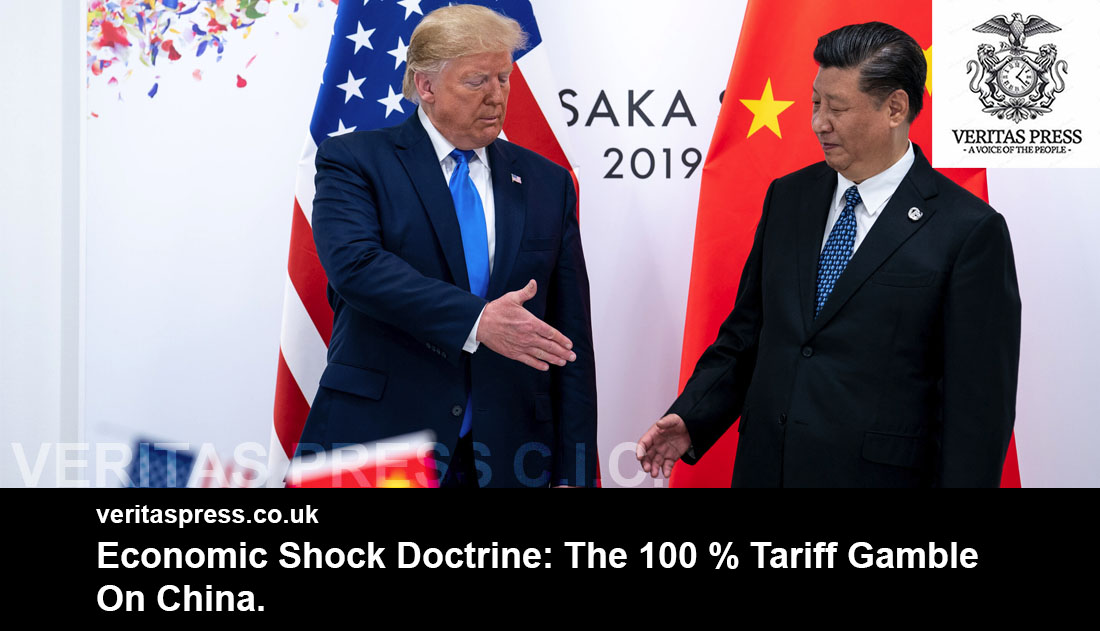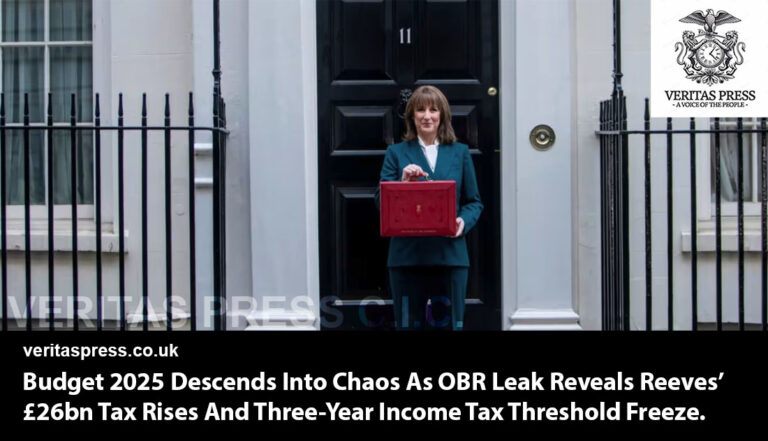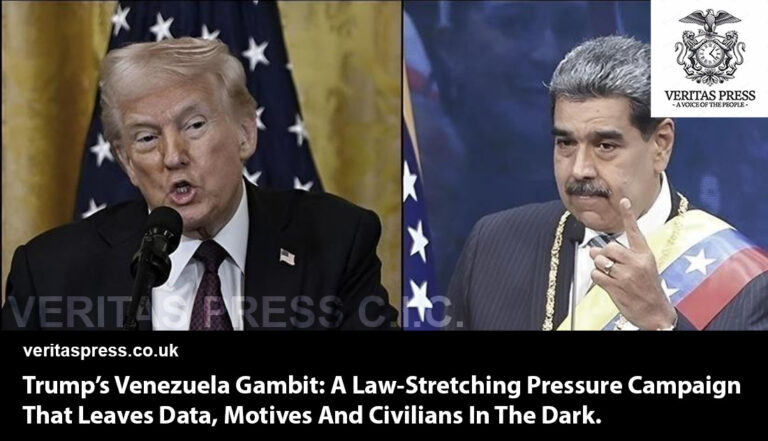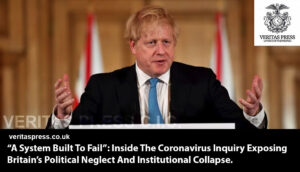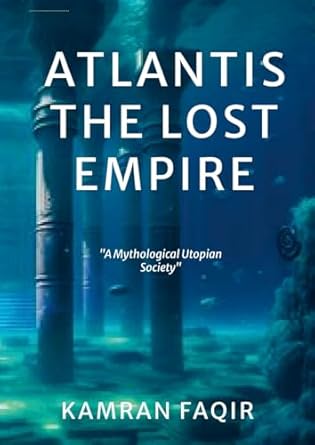Unpacking the Geopolitical Logic, Economic Fallout, and Structural Rebalancing of Global Trade.
If the United States imposes a 100 percent tariff on Chinese goods starting November 1, 2025, in response to China’s newly intensified export controls on strategic minerals, this is not mere brinkmanship, but structural escalation. Rather than a negotiating gambit, it marks a shift toward a multidimensional conflict in which trade, supply chains, technology, finance, diplomacy, and even military posturing become instruments of statecraft. The question is no longer whether China will respond, but how, where, and with what effectiveness. The deeper question is whether this titanic gamble will succeed in enforcing U.S. objectives, and what a final settlement might look like, if one emerges at all.
1. The Fragility Of Trump’s Deal-Making Diplomacy:
1.1 From Truce to Escalation
Donald Trump’s governing style centres on dramatic, often public, “deal diplomacy,” a posture of strength backed by threat, bluff, and reset. With China, however, that posture has begun to crack.
On October 10, 2025, Trump posted on Truth Social that the U.S. would impose an additional 100 percent tariff on Chinese imports beginning November 1 (or earlier, depending on China’s actions). This is to be added atop existing tariffs on Chinese goods. Simultaneously, he announced that new export controls on “any and all critical software” would accompany the tariff escalation.
The catalysing straw was Beijing’s move to further tighten export controls on rare earths, magnets, and related technologies, measures that, in the U.S. view, threaten key defence and tech supply chains.
The market reaction was swift and severe: the S&P 500 fell 2.7 percent, the Dow plunged nearly 900 points, and tech bellwethers such as Nvidia saw steep declines. The suddenness of the announcement, coming just weeks ahead of an anticipated Xi–Trump meeting at the APEC summit in South Korea, underscores the fragility of the transactional truce that had previously held.
As you note, one-to-one dealmaking can work when negotiating with smaller, weaker states. But facing China, with its deep reserves of economic and strategic leverage, this approach looks increasingly brittle. Wendy Cutler, long a negotiator at USTR, struck to the point: “the US is now dealing with a more assertive, well-prepared, less US-dependent and self-confident Beijing than during Trump 1.0.”
1.2 The Limits of the “Shock Doctrine” in Economic Policy.
Your conception of “economic shock doctrine,” decisions made by provocation and confrontation, is particularly resonant in this moment. Indeed, the first 100 days of the second Trump administration have exhibited many of its core features:
- The theatrical announcement: policies revealed via grand gestures or social media posts rather than through quiet internal coordination.
- High uncertainty built in: threats made, sometimes partially walked back, creating persistent volatility and forcing actors to operate as if the worst case is imminent.
- Collateral damage as acceptable cost: businesses, supply chains, and global capital flows are assumed to absorb disruptions as part of the political playbook.
- Institutional pressure: threats or interventions targeting independent agencies like the Federal Reserve or regulatory bodies introduce additional risk into what should otherwise be structural stability.
In this framework, the 100 percent tariff threat functions less as a calibrated tool and more as a shock injection into the system, one intended to destabilise complacency, reorder bargaining positions, and force counterreactions. But as with all shocks, the side effects may prove uncontrollable.
Already, the Liberation Day tariffs of April 2025, which aimed to impose sweeping import duties across countries under the pretext of “reciprocity” and invoked emergency powers, have been subject to judicial invalidation. In V.O.S. Selections, Inc. v. Trump, the U.S. Court of International Trade ruled that the executive overstepped authority under the International Emergency Economic Powers Act (IEEPA). That decision muddies the legal terrain for further sweeping tariffs, especially ones cast as emergency or retaliatory measures.
Hence, even if a 100 percent tariff is politically declared, its implementation may face legal challenges and enforcement hurdles. The risk is not just economic blowback but institutional deadlock.
2. The Geopolitical Logic: Rare Earths, Supply Chains, And Strategic Leverage.
2.1 China’s Rare Earth Weaponisation.
China already controls a dominant share of the rare earth processing, refining, and magnet manufacturing capacity globally, estimates suggest over 90 percent of high-end magnet production and a vast majority of complex refining lies within Chinese firms.
On April 4, 2025, Beijing imposed export controls on seven key rare earth elements (e.g., dysprosium, terbium, gadolinium) in retaliation for U.S. tariffs. In October, China doubled down by placing new controls on the export of magnet tech, forbidding Chinese entities from assisting overseas projects without approval, and selectively restricting outbound exports even when the imported components were manufactured abroad. These measures were explicitly justified on national security grounds.
Analysts caution that China’s restrictions are not necessarily intended as perpetual bans but as negotiation levers, a capability to throttle supply at will to extract concessions in diplomacy.
The strategic logic is clear: if the U.S. depends on Chinese rare earths for defence, semiconductors, and energy-transition technologies, then China gains a form of indirect “export-based deterrence” over U.S. industrial policy.
An academic modelling exercise (Meng et al., 2025) formalises how signals sent via supply constraints can erode target nations’ capabilities in non-kinetic domains, showcasing a “suppressive trajectory” of strategic resilience under supply strain. Meanwhile, a complementary network study (Klimek et al., 2025) underscores how dependence on China in the midstream input tiers (magnets, ceramics) is disproportionately risk-exposed, constraining strategic autonomy.
2.2 Structural Decoupling and the Rebalance of Trade Order.
This confrontation invites a deeper reframing: we are no longer in a trade war in the 20th-century mould of competitive tariff tit-for-tat but in the era of strategic decoupling, the intentional disengagement, realignment, or reconfiguration of integrated global supply chains.
Under such conditions:
- Trade corridors reorganise: U.S. and allied supply chains will accelerate efforts to diversify away from China, particularly in critical minerals, battery materials, high-end electronics, and intermediary manufacturing.
- Alliances gain new gravity: Nations like Australia, Japan, South Korea, India, and EU states become more significant as alternative nodes of supply and investment. Multilateral cooperation in critical minerals, semiconductors, and green tech may solidify into blocs.
- Third countries become battlegrounds: China may deepen ties with Global South nations via raw-material deals, infrastructure offers, and trade pacts, thereby offsetting U.S. pressure.
- Finance and subsidies become warfare tools: State-backed investment, industrial policy subsidies, export-financing, and even cross-border acquisition restrictions (e.g., via CFIUS-type mechanisms) will be critical levers.
- Institutional fragmentation intensifies: Global trade bodies (WTO), financial regimes, and standard-setting institutions may come under strain or split into rival architectures.
From this vantage, a 100 percent tariff is less a discrete policy than a structural signal: the U.S. is signalling that decoupling is no longer rhetorical, but underway.
3. Economic Fallout: Shockwaves, Deadweight Loss, And The Risk Of Recession.
3.1 Market Panic, Liquidity Crunch, and Crypto Spasms.
The tariff announcement triggered immediate turmoil in equities, with the major indexes registering the sharpest one-day decline in months. The implied volatility (VIX) spiked, bond markets jittered, and the U.S. dollar weakened as investors sought safer havens.
Beyond equities, digital assets suffered dramatic cascading liquidations. An estimated $19 billion in leveraged crypto positions were wiped out in a 24-hour spree, affecting around 1.6 million traders. Bitcoin and Ethereum led the losses, and ripple effects raised concerns about counterparty risk spilling into traditional finance. While crypto markets are highly volatile by nature, the speed and scale of the drop underscore how geopolitics now intersects with algorithmic and leveraged finance.
3.2 Supply-Chain Strain and Industry Dislocation.
Industries reliant on Chinese imports, from consumer electronics to automotive to defence, will face immediate cost shocks. Essential components embedded with rare earths and related inputs may face delays, license bottlenecks, or price doubling. Some firms may scramble to buy on the spot market, while others may halt production or redirect orders. These frictions translate into deadweight losses: economic activity that evaporates rather than gets reallocated efficiently.
Unlike simple import substitution theorised in textbooks, many “protected” sectors rely on imported inputs themselves. The result is self-inflicted strain: tariffs that raise costs for domestic producers, reduce competitiveness, and disincentivise investment.
Export sectors will also suffer. China may retaliate selectively, curtailing U.S. agricultural, energy, or tech exports, particularly those using Chinese raw materials.
Even broader, trade contraction reduces tax revenues, crowding fiscal space in many countries. Combined with high public debt levels globally, this raises the spectre of sovereign stress cycles tied to macro-shock exposure.
3.3 Recession Risk and Confidence Collapse.
The consensus among economists is tilting toward recession in the U.S. later in 2025 or early 2026. Key leading indicators:
- Consumer confidence is already eroding under the weight of volatility and uncertainty.
- Business investment decisions are being deferred or cancelled amid policy ambiguity.
- Credit spreads and yields are rising as investors demand higher risk premia, increasing borrowing costs.
- Supply chain stress constrains production and inflation dynamics in unpredictable ways.
- Export contraction due to retaliatory measures and decoupling pressures.
If this translates into real GDP contraction, the political fallout will be severe, especially for an administration riding on economic renewal rhetoric.
4. China’s Strategic Response: Restraint, Retaliation, And Patience.
4.1 The Calculus of Restraint (So Far).
Despite the scale of Trump’s threats, China’s reaction has been measured, at least publicly.
- Beijing has defended its rare earth export controls, labelling Trump’s 100 percent tariff threat hypocritical and framed as “double standards.”
- At the moment, China has not imposed immediate reciprocal tariffs. Instead, it has threatened unspecified countermeasures.
- Beijing has leveraged regulatory tools: for instance, launching an antitrust investigation into Qualcomm over its acquisition of Autotalks. It also imposed additional port fees on U.S. vessels.
This posture reflects strategic patience. China may believe that the burden of adjustment and disruption falls more heavily on the U.S. and global firms that depend on open trade and stability.
By signalling openness to negotiation (“the door is wide open” per Foreign Ministry), China attempts to place the moral burden for escalation on Washington.
4.2 Potential Retaliatory Moves
Should escalation deepen, China has a suite of retaliation tools:
- Escalated export controls: further curbs, quota restrictions, or embargoes targeting vital minerals or associated tech.
- Selective nondispatching of rare earth licenses: delaying or denying export licenses to critical U.S. partners.
- Trade retaliation: targeted tariffs or non-tariff barriers on U.S. exports, soybeans, farm products, high-tech goods.
- Regulatory pressure on U.S. firms in China: antitrust cases, delisting pressure, punitive enforcement.
- Currency and capital controls: managing capital outflows or adjusting currency policy to wrench financial conditions (though riskier globally).
Beijing may calibrate retaliation to avoid full-blown destruction of the economic relationship, preferring incremental escalation to preserve room for negotiation.
4.3 The Long Game
China’s position is bolstered by structural and temporal advantages:
- It holds the chokehold on critical minerals.
- It can cultivate alternative markets and supply partners (e.g., Africa, Latin America).
- It can survive slower growth more readily than a debt-laden U.S. struggling under financial stress.
- And crucially, China’s leadership is comfortable playing long time horizons; incremental wins accrue.
If the standoff prolongs, Beijing may gradually siphon global supply chains into its orbit, reducing U.S. leverage over time.
5. Strategic Risks, Uncertainties, And Game-Theory Pitfalls:
5.1 Bluffs, Credibility, and Chicken Games.
Trade escalation operates like a high-stakes game of chicken. If one side blinks, it appears weak; if both stay firm, the wreck is mutual. The risk is that the Trump administration misjudges China’s resolve or the economic fallout.
China may call the bluff, conclude the U.S. cannot sustain a 100 percent tariff without breaking its own economy, and continue pressing. Or, China may selectively escalate in sectors where the U.S. is highly vulnerable, without going to full war.
5.2 Legal, Institutional, and Political Constraints.
- The earlier V.O.S. Selections ruling undercuts the notion of unilateral tariff imposition under emergency authority.
- Political opposition, interest groups, and Congressional checks may constrain the administration’s ability to future-proof or shield embattled sectors.
- Domestic pain in agriculture, manufacturing reliant on imports, or key tech sectors may stoke political backlash.
- Multi-institutional bodies (WTO, regional trade pacts) and allied actors may mount pressure, blocking or countering U.S. moves.
5.3 Systemic Fallout and Third-Party Risk
Even if the U.S. and China accept mutual damage, the broader global system may fracture:
- Emerging markets tightly integrated into U.S.-China supply chains will suffer cascading blowbacks.
- Credit market stress or capital flight could infect vulnerable sovereigns.
- Institutional fragmentation (e.g. rival trade blocs) may ossify, making reintegration costlier.
The shock doctrine, in effect, gambles that the benefits of disruption outweigh the cumulative costs. That bet is far from assured.
6. What A “Settlement” Might Look Like, If One Arrives:
Given the stakes, a negotiated accommodation is possible, but it would not look like past trade deals. Possible elements include:
- Tiered carve-outs or sectoral exemptions (especially in defence, clean energy, aerospace).
- Managed licensing regimes for rare-earth exports and software transfers, with oversight and reciprocity.
- Strategic stockpiling and joint sourcing initiatives (e.g. U.S. and allies co-financing mining and processing in non-China jurisdictions).
- Binding dispute resolution guarantees with credible enforcement (possibly outside WTO frameworks).
- Phased tariff de-escalation tied to verifiable compliance benchmarks.
- Cooperative supply-chain redesign frameworks among allied blocs to bypass direct confrontation.
But any settlement will require mutual trust (scarce), enforceability (difficult), and third-party guarantees (even more difficult). More likely is a cold stalemate or gradual decoupling rather than a clean “deal.”
7. Concluding Thoughts: Is It Gamble, Strategy, Or Self-Destruction?
Your framing, “economic shock doctrine,” is apt: the Trump administration is deploying tariffs, threats, and disruption as strategic instruments rather than measured tools. The decision to go to 100 percent tariffs against China is less about trade balances and more about discipline, repositioning, and systemic pressure.
Some final reflections:
- It’s a regime struggle, not a tariff war. The escalation transcends Commerce policy; it’s about whether U.S.-led globalisation remains viable in an era of strategic competition.
- The risk of self-sabotage is high. The U.S. may inadvertently squeeze its own industrial base, weaken alliances, and bolster China’s alternative architectures.
- Time is China’s ally. Structural resilience, patient repositioning, and deeper alliances may allow it to outlast the American shock campaign.
- Outcomes are probabilistic. The most likely scenarios are partial decoupling, protracted competition, and fragmented trade regimes, not a neat resolution.
- For global order, this is a stress test. If the U.S. cannot sustain global leadership without coercion, the rest of the world may pivot to multilateral or alternative governance models.
We stand at a threshold: not merely a trade war, but a reorientation of the global economy. The 100 percent tariff gamble is a high-stakes wager, not just for the U.S. and China, but for the liberal order built after 1945.
What a final settlement might look like, if one emerges at all.
Advertisements
Tags:







